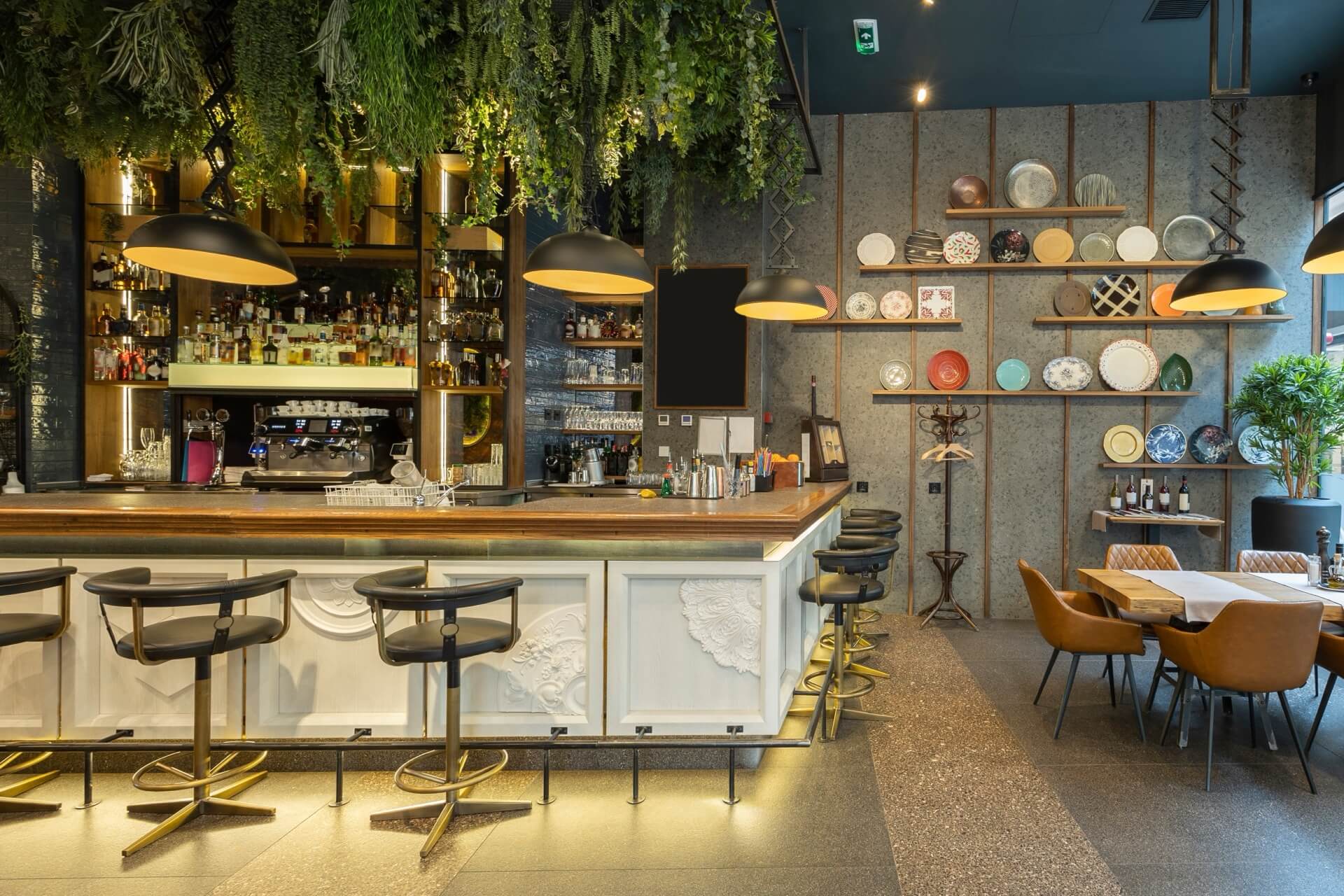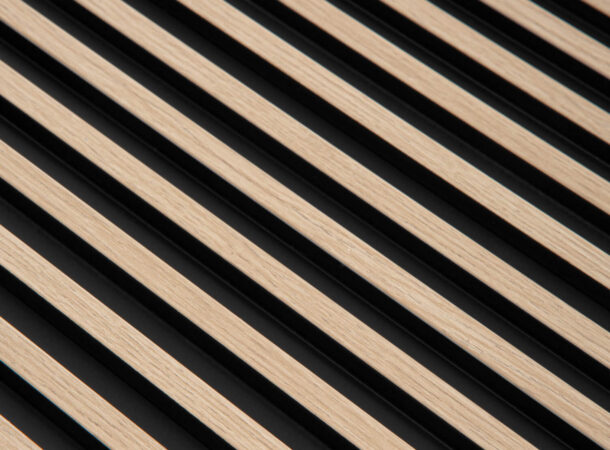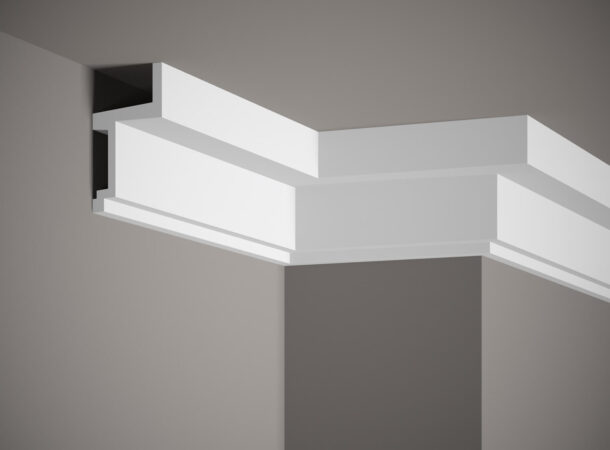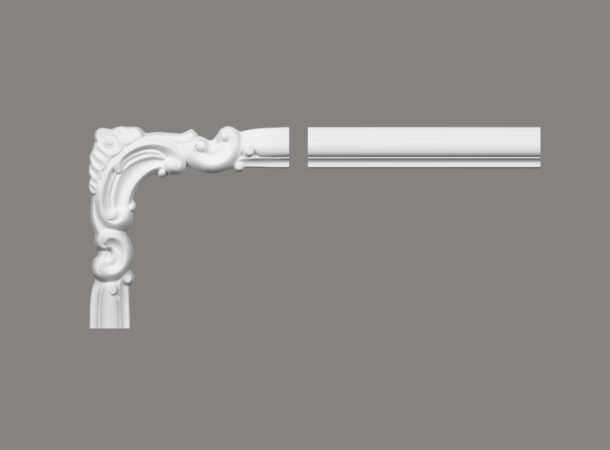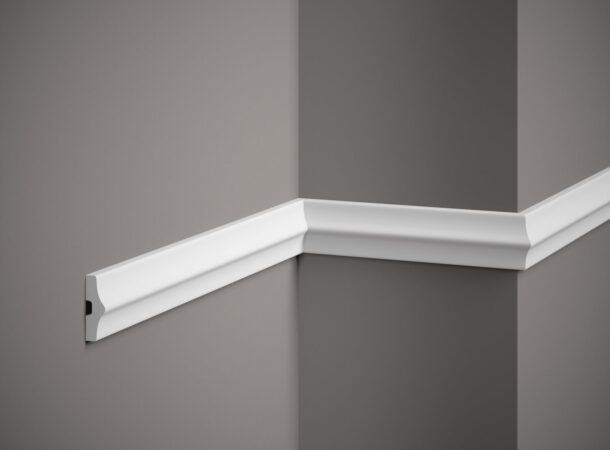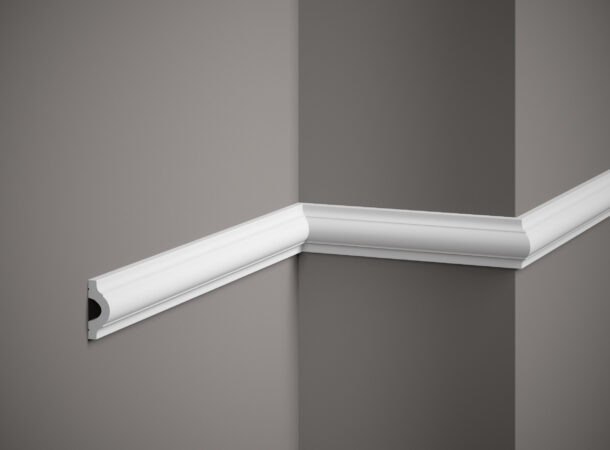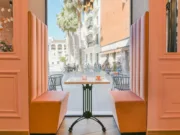The use of stucco in restaurants – tips and design inspiration
A restaurant is a place where guests want not only to eat a delicious meal, but also to experience something completely new. This is why establishments should be pleasing to the eye and provide an aesthetic experience. One way to create a unique place is to use stucco. Decorative mouldings, matching wall panels or other decorative elements will make the food served taste that much better. Learn how to apply stucco in restaurants from this article.
For which restaurant projects will stucco work well?
Stucco is perfect for restaurant designs that want to emphasise elegance and sophistication, for example in classic European restaurants or places with a romantic character. Ceiling stucco is found in many establishments that have been adapted in historic, historical locations. Of course, decorative elements are not exclusively reserved for such places. Interestingly, wall stucco is also popular in retro and vintage premises, all because it adds a unique character to the space. In addition, a modern approach to stucco, which combines traditional elements with minimalist design, can be attractive to modern restaurants that aim to create a unique atmosphere using classic touches. All you need to do is pay attention to the details, especially the trims – they are a unique solution that combines aesthetics with functionality and durability.
Here are some examples of how you can use stucco in a restaurant:
- Ceiling skirting boards – will work well as an elegant ceiling border, emphasising the height of the room. The MDB115 ceiling skirting board model will be perfect for restaurants, as it is equipped with a special space where you can install LEDs. This ceiling strip also has the advantage of having LightGuard technology, which eliminates the LEDs from shining through the surface.
- Skirting boards – ideal for masking between walls and floor and for edge protection. In catering establishments, skirting boards should be resistant to all types of mechanical damage, for example MDOO1P.
- Pilasters – perfect for adding depth in larger rooms or as a decorative element at entrances. For a modern restaurant, choose the minimalist and simple pilasters – MDD4112.
- Ceiling rosettes – use rosettes on the ceiling to highlight focal points above a table or reception area. We particularly recommend you use the popular B3O33 model.
- Modern escutcheons – want to introduce unconventional solutions to your premises? The QROO2 will do the job – it is a unique rosette that has been dedicated to the use of LEDs. It has a special place where you can install LED strips, which you won’t find in other models. QROO2 was created in collaboration with Tomek Rygalik.
- Wall laths – create dynamic, geometric patterns on the walls to add character to the interior. At the bars, wooden elements such as the Light Oak LO1O2 laths look great.
- Columns – ideal for use at entrances or as an element to divide a space into zones.
- Wall panels – use panels to create a striking backdrop for bars or special sections in a restaurant from the Duna Collection, for example.
- Lighting strips – integrate LED lighting into the strips to create atmospheric and functional lighting effects.
What material to choose stucco for a restaurant?
There is polyurethane stucco, polystyrene stucco or even wooden stucco available in the shops – so which is the best solution?
When choosing stucco for a restaurant, it is important to pay attention to the durability, aesthetics and resistance of the material. PolyForce, an innovative polymeric material, is an excellent choice for catering establishments due to its unique properties. It is a high density material, which translates into considerable durability and resistance to mechanical damage. The plastic is also resistant to moisture and UV radiation. In addition, decorative elements made from PolyForce are easy to install and can be painted, allowing full personalisation and matching to the style of the restaurant interior. Such features make them an ideal choice for restaurateurs looking for durable, aesthetically appealing and easy to maintain stucco.
Maximum scratch resistance
Indoor modern stucco for restaurants must be extremely durable. Otherwise it will lose its charm quite quickly. This is why polystyrene façade stucco or even wooden interior stucco pieces may not be durable enough. Our interior stucco has been created using ScratchShield® technology, which maximises the scratch resistance of the mouldings, increasing their durability by 40% compared to standard products available on the market. This innovative solution ensures that Mardom Decor skirting boards effectively protect your floor panels from water, dirt and mechanical damage to the edges, whilst also making them easier to keep clean.
Check out the free interior visualizer!
See how our products will look in your room. It’s just three simple steps – take a photo with your phone, upload the file to the visualizer and apply stucco to your walls with one click. Ready!
Go to the visualizer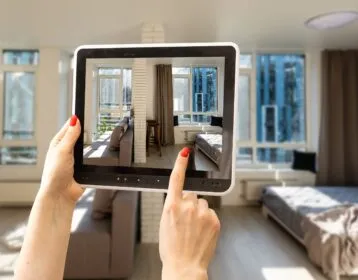
Practical restaurant design tips using stucco
Arranging a restaurant with the use of stuccowork can significantly enhance the aesthetics of the interior, creating a unique atmosphere that is sure to attract guests. However, before decorating a restaurant with ceiling mouldings or wall stucco, it is worth knowing a few design principles.
Definition of zones
Use stucco to delineate different zones in the restaurant. Skirting boards or ceiling rosettes can mark transitions between the dancing and dining areas.
Highlighting architectural elements
Use stucco to enhance the architectural features of your restaurant. Elegant mouldings and frames can accentuate windows and doors, while rosettes can highlight the ceiling, adding depth and character to the interior.
Creating a striking background
Use wall louvres or decorative panels to create a striking backdrop for key areas, such as the bar, the entrance area or the team area. In this way, the area will attract attention and introduce an artistic element to the interior.
Matching the style
When choosing stucco, be guided by the style of the restaurant. Simple, minimalist forms will work well in modern spaces, while in classic interiors you can opt for more ornate pieces.
Adequate lighting
Lighting can significantly change the character and atmosphere of a room. Install spotlights that highlight details to create an elegant, decadent effect or introduce a warm, cosy atmosphere. Our range includes lighting strips capable of creating a truly interesting effect. Various models, including the QLO17 and MD21O, use LightGuard® technology. This is an innovative solution that helps prevent unwanted spotlight effects. LightGuard® eliminates this problem, thanks to its compacted slat structure.
Stucco in a restaurant – which elements are worth choosing?
Turning a restaurant into a work of art using stucco is a process that requires creativity and attention to detail. Plaster stucco will have a completely different effect than wall stucco created from quality materials, so it is worth reaching for the best solutions. How do you turn a restaurant into a work of art? Here are our suggestions.
An essential element: corners
One of the types of stuccowork that should be included in a restaurant is corner pieces. They allow you to significantly enrich the interior of your restaurant. You can use them as a subtle decorative element or create a larger wall arrangement. For a restaurant in the classicist style, we recommend the Corner MD318-10, which is characterised by its simple form.
Corners combined with dedicated wall mouldings help to create a cohesive and aesthetically pleasing finish that catches the eye and adds elegance. They can also act as an artistic setting, highlighting works of art or photographs, making them not only a decorative element but also a practical solution for interior design. For such a setting, we particularly recommend the Corner MDD332-11, which is decorated with beautiful details.
Elegant ceiling rosettes
A focal point in the premises or perhaps the ceiling above the tables? This is exactly the kind of place you want to decorate with rosettes. There are larger decorative elements, such as the B3O15, which do not require any additional decoration, or small rosettes, such as the B311O, which are ideal for creating entire compositions. And don’t forget about the ceiling – it should feature rosettes with lighting effects, such as the QROO5 or QROO2 model. Guests who are waiting for a hot meal have a lot of time to look around the room, so provide them with beautiful decorations on which they can keep their eyes – rosette B3047 has been decorated in a particularly intriguing way, thanks to which it can mesmerise.
Wall mouldings as frames for works of art
Use the mouldings to create frames for paintings, photographs or other works of art hung on the walls. Such a presentation will catch the eye and add value to your interior design, making it more elegant. The artworks you hang can belong to travellers who want to showcase their work.
Pilasters to add luxury
In restaurants with larger spaces or high ceilings, the addition of pilasters will give them a unique character. There are just a few aspects to bear in mind.
- The right location – pilasters look best in longer corridors or spacious rooms, where they can add depth and majesty. Placing them on either side of doors or windows emphasises symmetry and adds elegance to entrances.
- Styling – choose a style of pilasters that is in keeping with the overall character of the interior. Simple, minimalist forms such as the MDD412 pilaster will work well in modern spaces, while richly ornamented models such as the D1O514 will look better in classic interiors.
- Proportion – adapt the size of the pilasters to the size of the room. In small spaces, subtler and less intrusive pilasters are recommended to avoid overwhelming the interior.
- Lighting – consider using lighting to highlight the pilasters and add drama to the interior, hidden LED lighting to highlight the top or bottom edges of the pilasters can be particularly effective.
Stucco in restaurants – a summary
Stucco can significantly enhance the aesthetics of a restaurant, creating a unique atmosphere and attracting guests. Place rosettes on the ceiling, decorate the entrance with pilasters and use light to create interesting effects, such as lighting strips. It is also worth using stucco elements as borders, decorative backdrops or zone divisions in the premises.
Remember, however, that stuccowork made of high-quality material can be used in a wide variety of styles – from classical, European and romantic to modern interiors. If you want to delve further into the topic, we encourage you to read other texts on our blog, such as: Wall art in commercial spaces: How to decorate an office, restaurant, shop or service premises?

